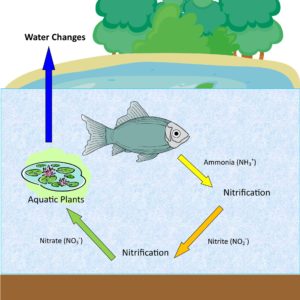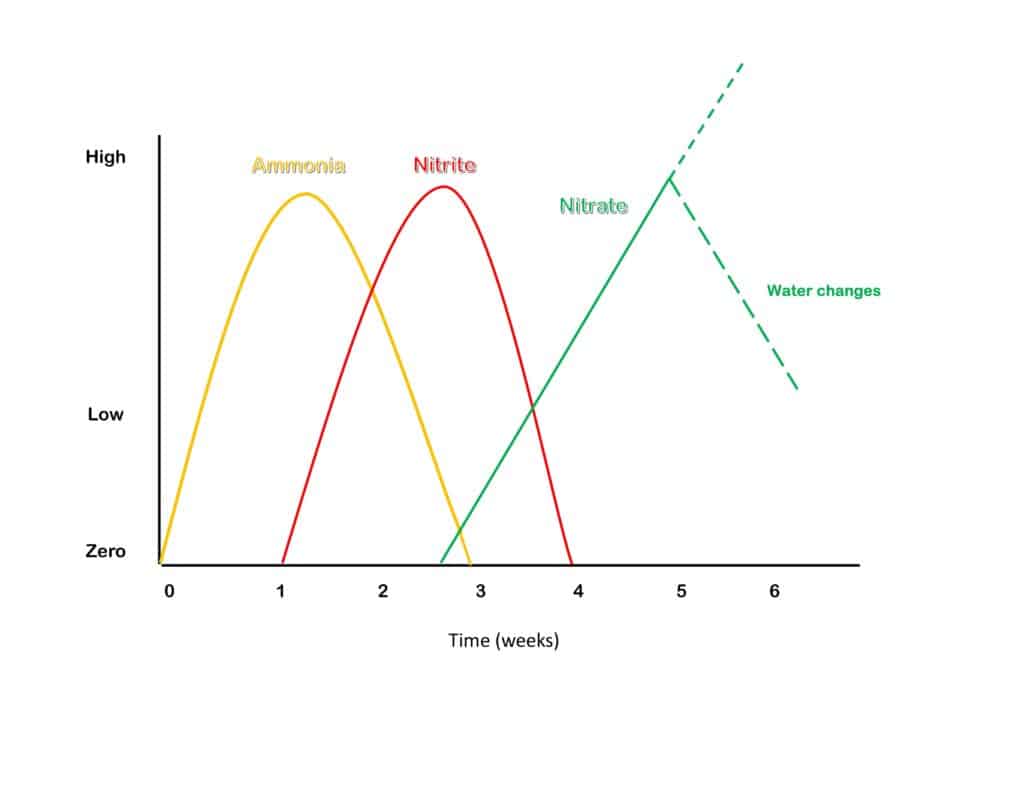If you are new or old to the fish keeping hobby, no doubt you have heard the phrase “fish system cycling.” What does this mean?
To “cycle” an aquarium is to establish its biological filtration, more specifically, your nitrogen cycle. Cycling refers to the colonization of beneficial bacteria to convert your fishes’ primary waste, ammonia, into nitrite and finally, nitrate.

How do I start my fish system cycling?
For most systems, this requires the addition of fish to a brand new system. Your new system will then go through “New Tank/Pond Syndrome,” as the colonies of bacteria are established. If you measure your ammonia, nitrite and nitrate levels, it will resemble something like this:

Can I do a fish system cycling without fish?
It is possible to do a “fishless” cycle by adding straight ammonia to an empty system with a starter bacterial colony. This is not recommended for beginners. You must carefully monitor your ammonia, nitrite and nitrate levels. Keeping in mind you must keep your ammonia to nitrite converting bacteria “fed” by adding ammonia throughout the cycle. If they run out of food halfway through, you risk losing those populations.
If you already have an established system and are starting a new one, you can steal some of the established biomedia to get your new system started. Keep in mind that your water parameters or fish populations for your new system may not match bacterial colonies. If the water and fish are similar, it will likely prevent new tank/pond syndrome.
Whenever you are starting a new fish system cycling, keep your bioload low to start. This will prevent toxic levels of ammonia from killing your new inhabitants.
Other Articles You Might Like
How to Not Kill Your First Fish

Pingback: Why Do Frogs Lie Upside Down? (7 Reasons) - The Reptile Room